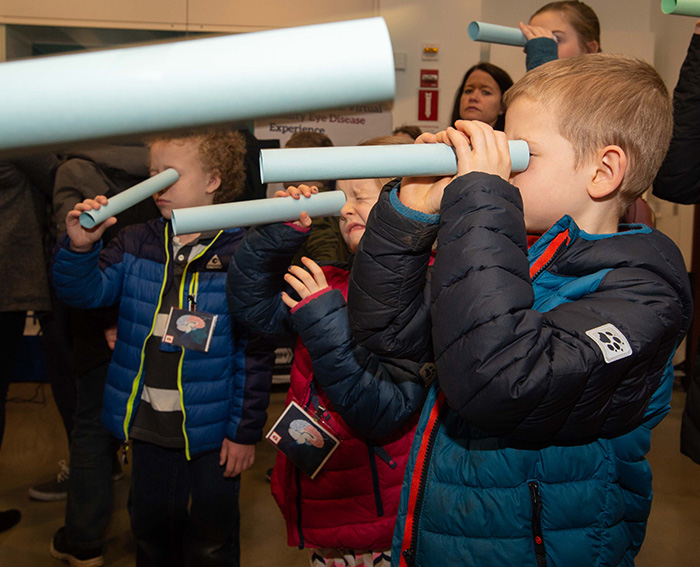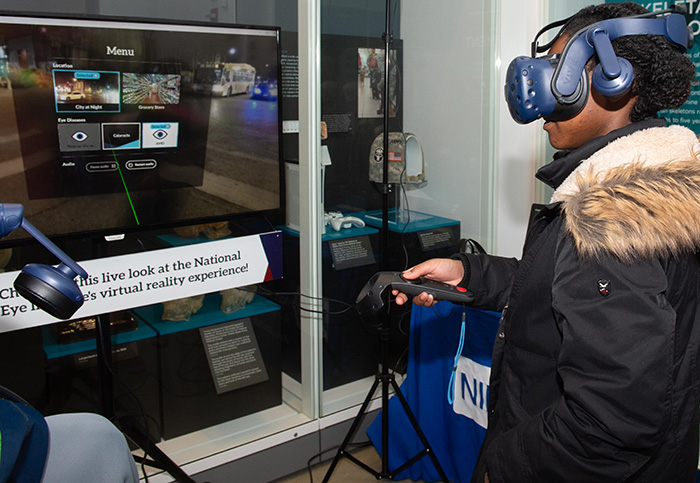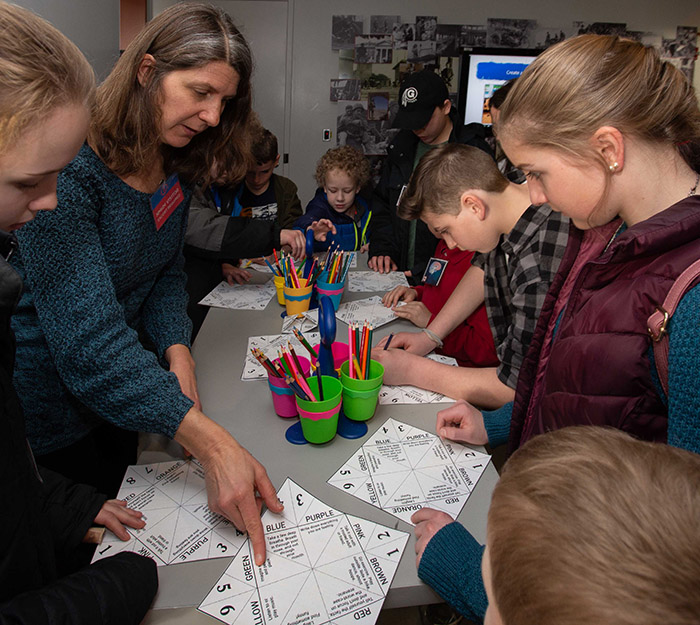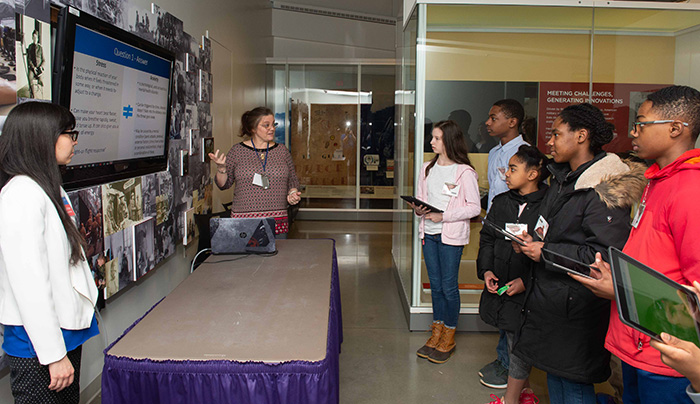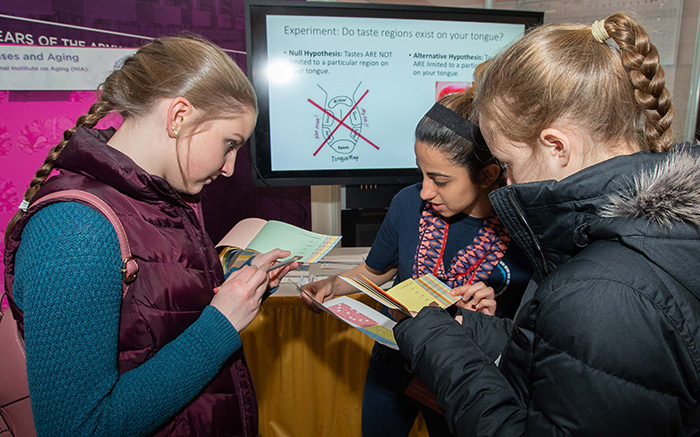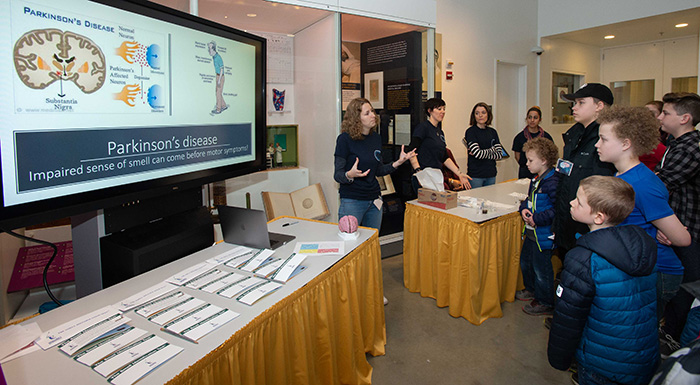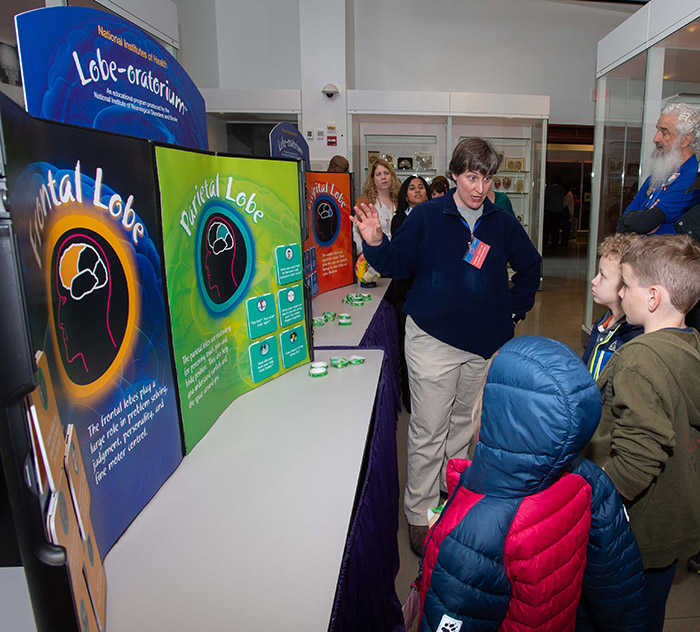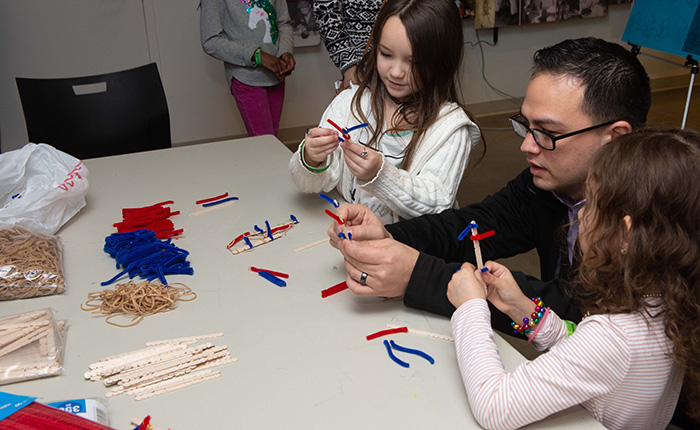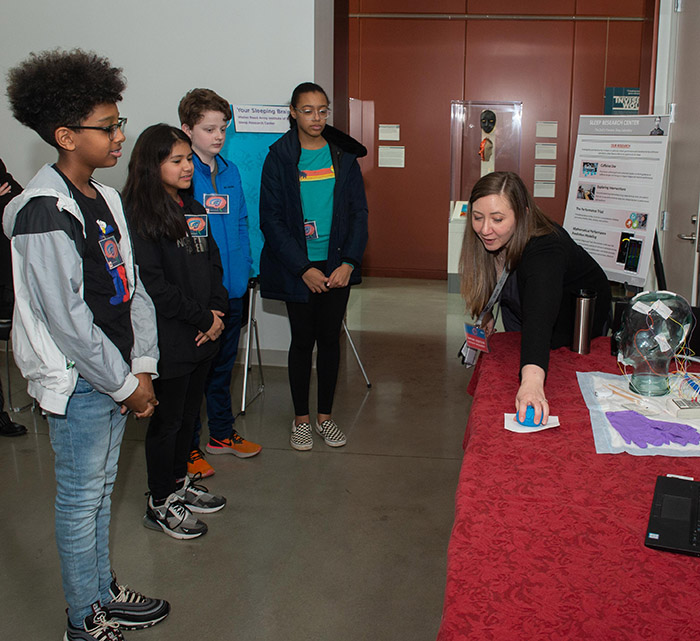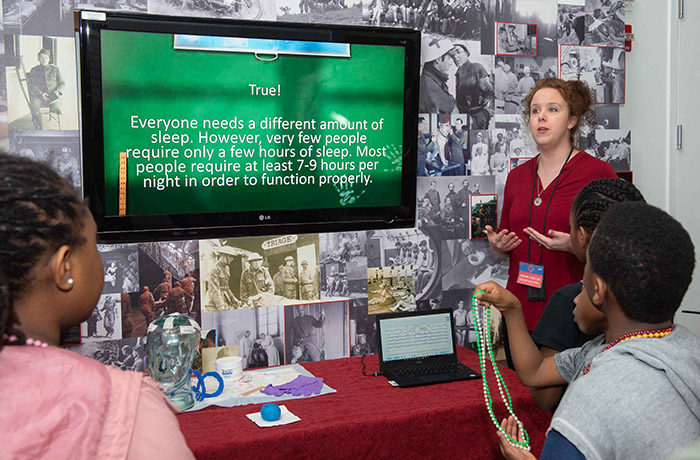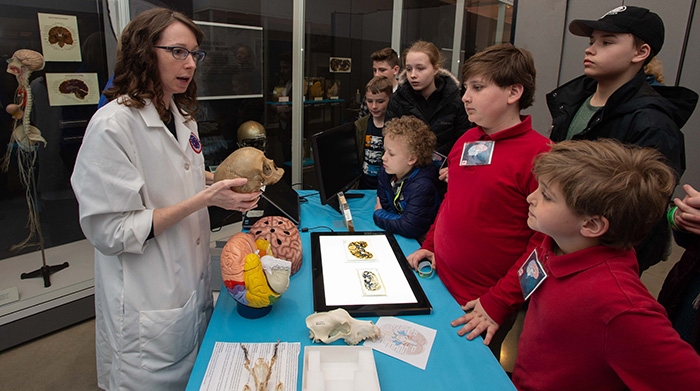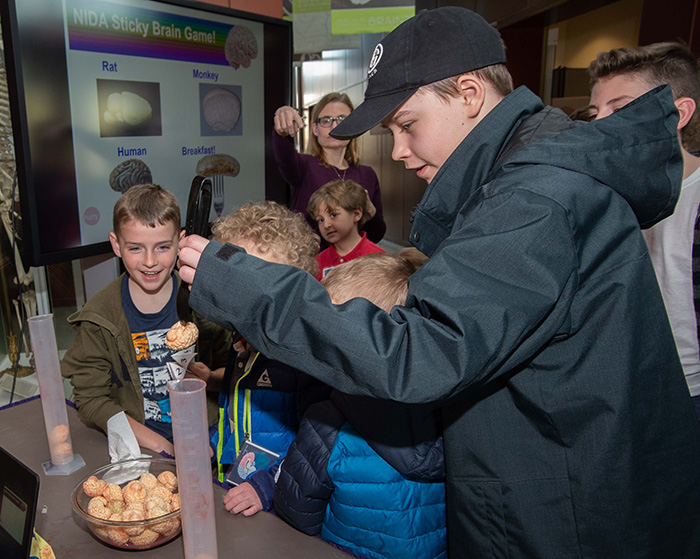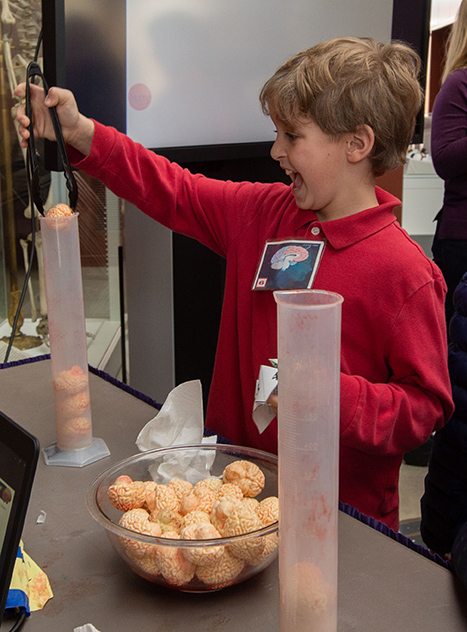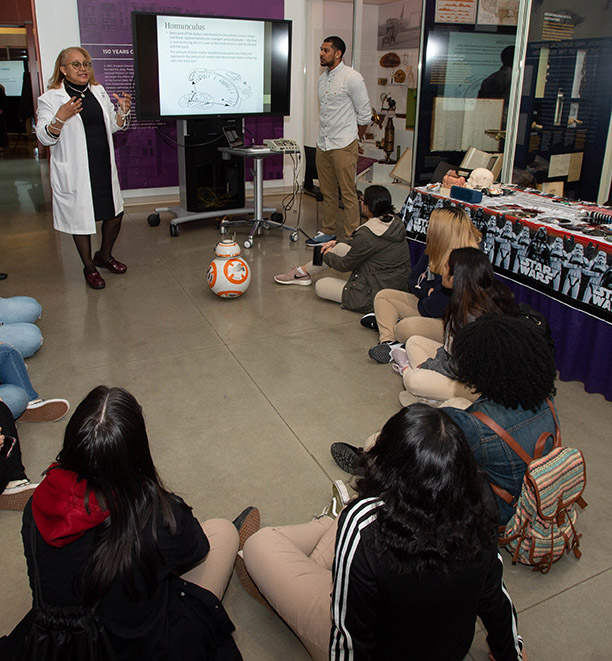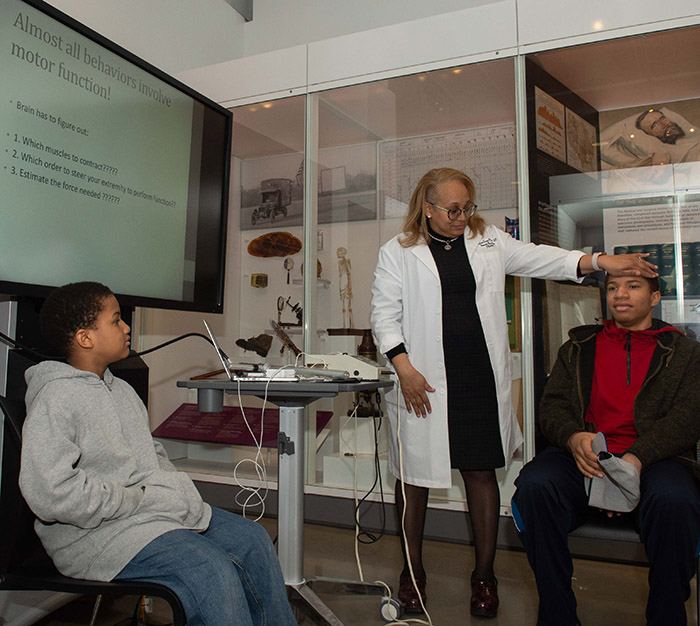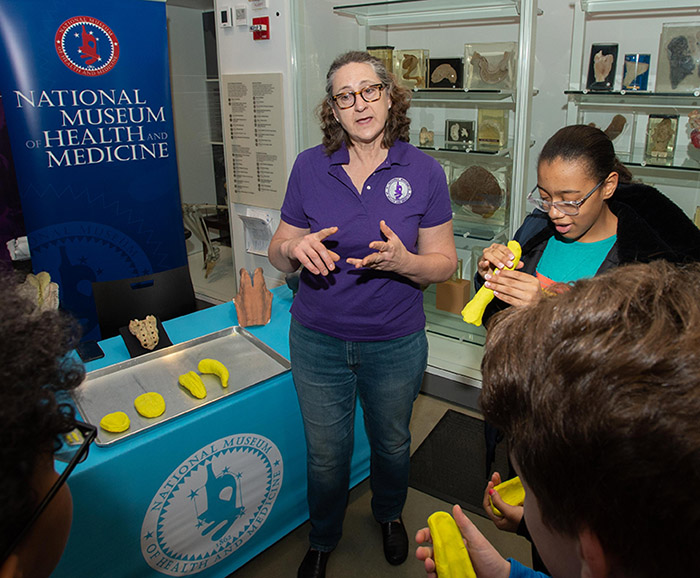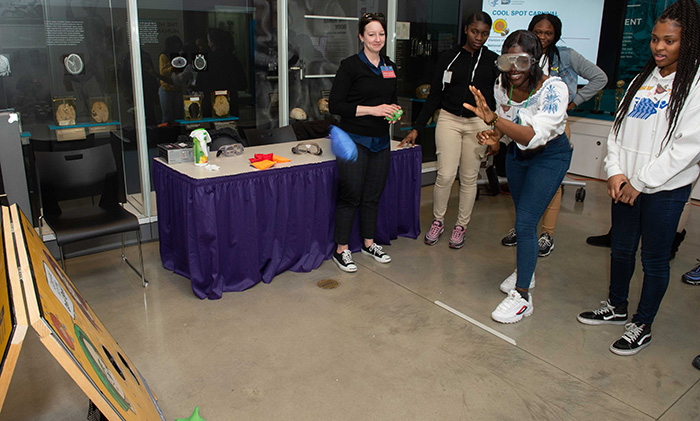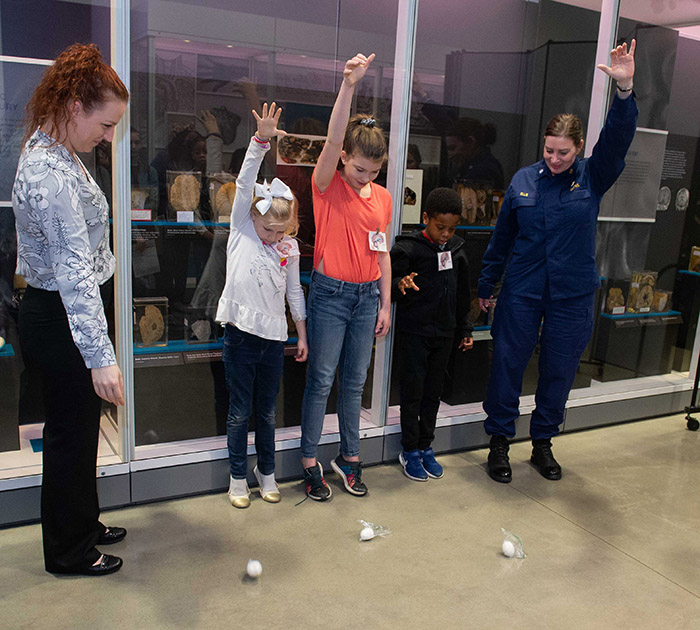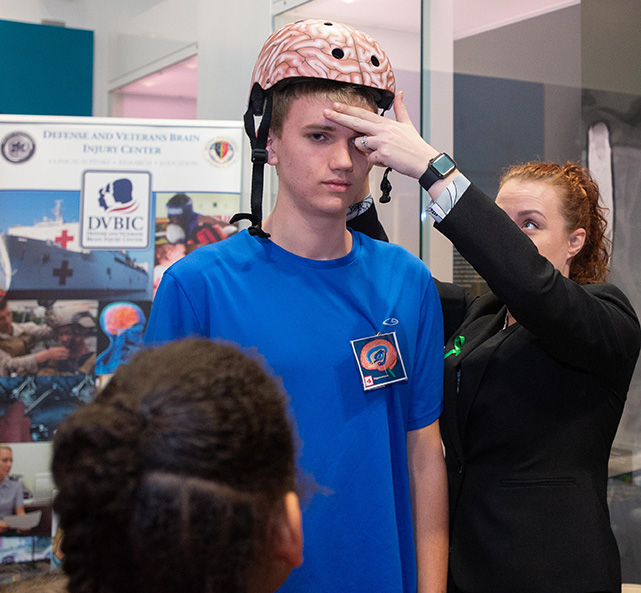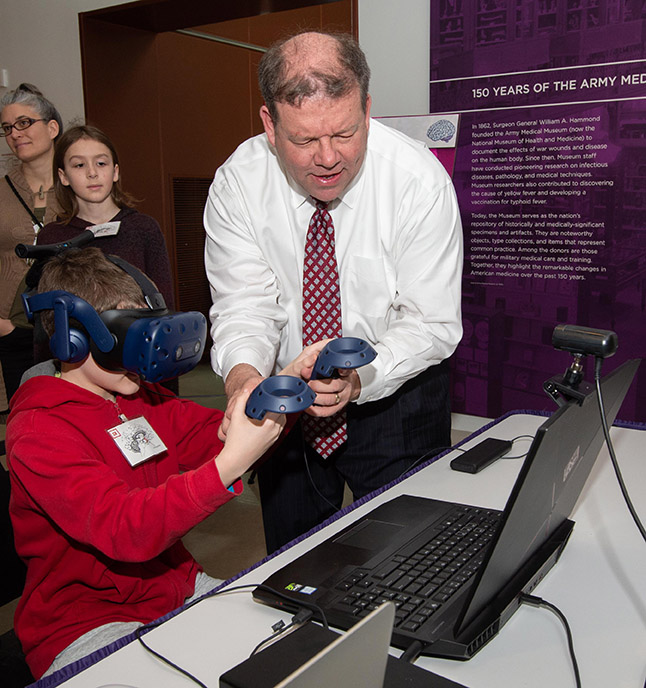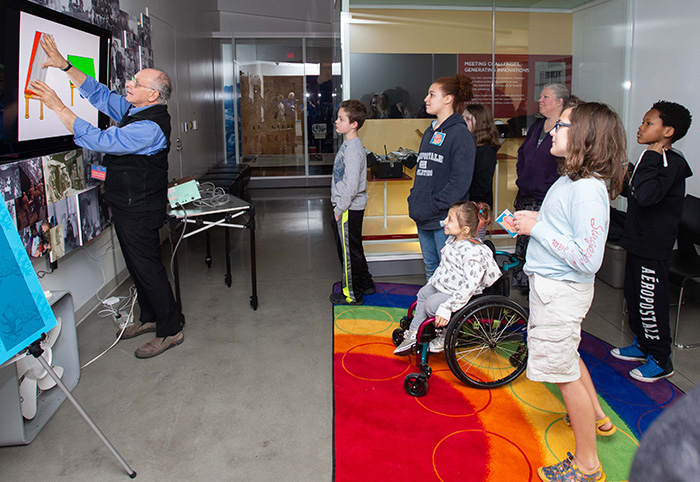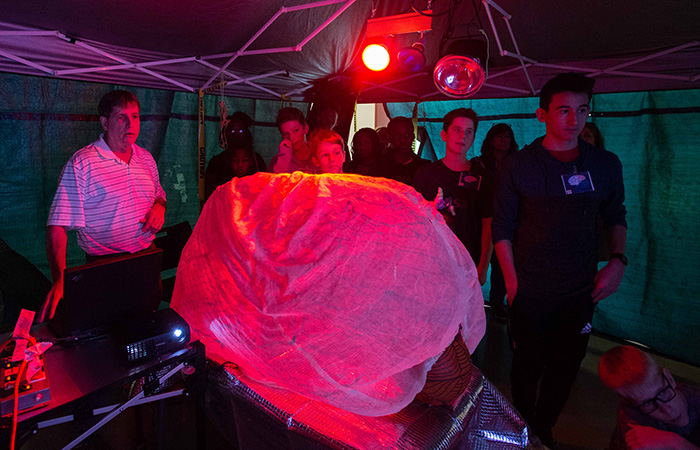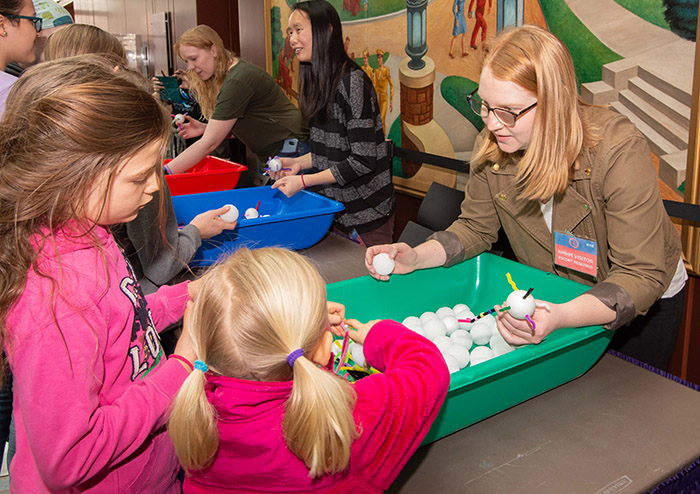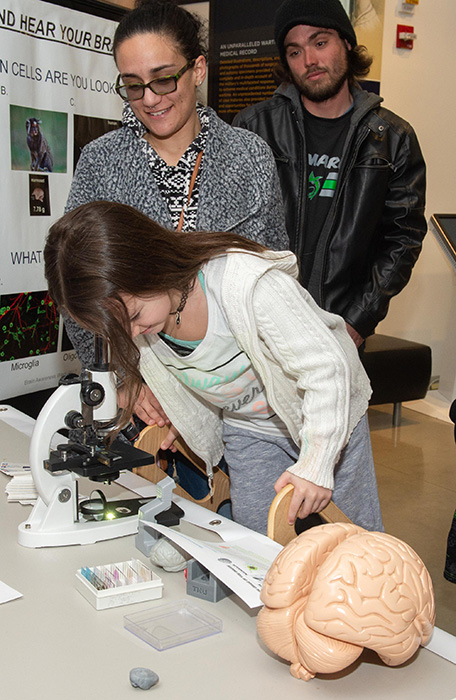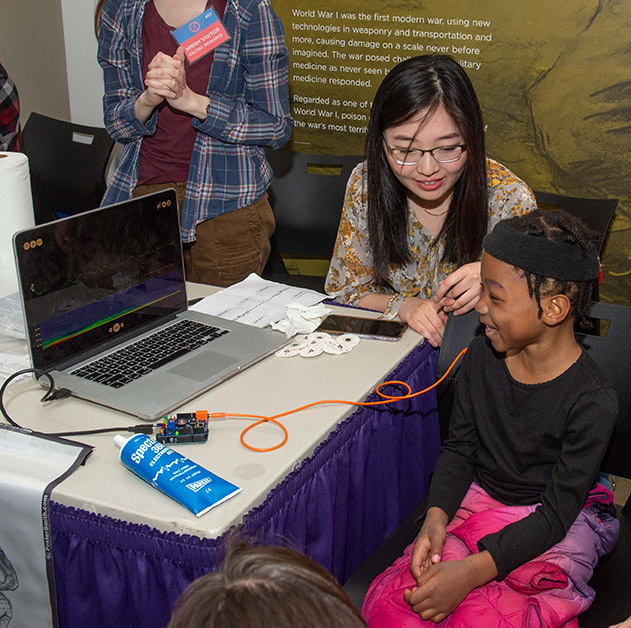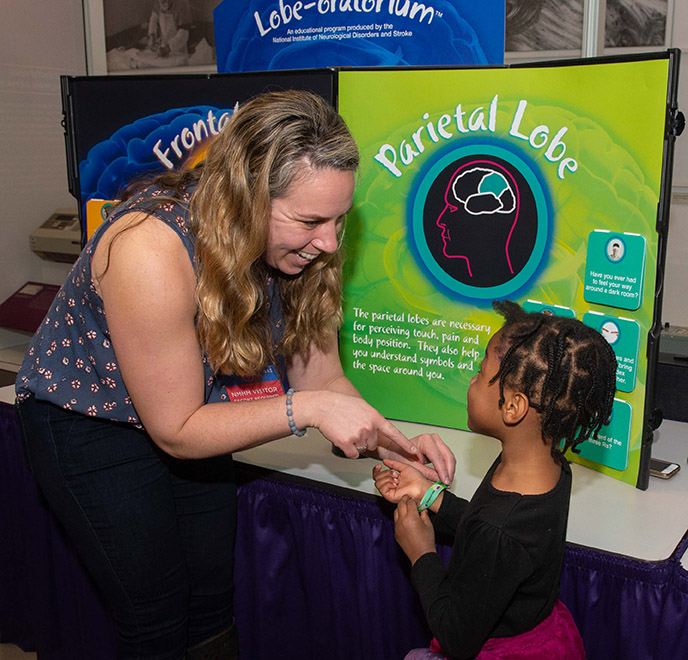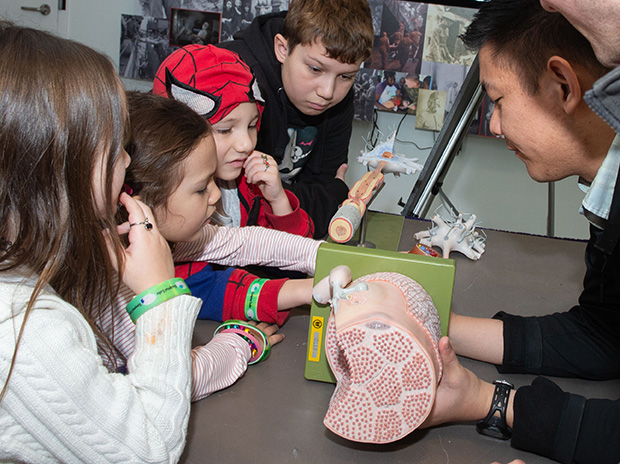2019 Brain Awareness Week Visitors Experience Interactive Presentations about Neuroscience
By Jacqueline Gase
NMHM Public Affairs Coordinator
.jpg)
Archibald Fobbs, neuroanatomical collections manager at the National Museum of Health and Medicine, shows students a woodpecker skeleton during the second day of Brain Awareness Week on March 14, 2019 at NMHM in Silver Spring, Maryland. (Disclosure: This image has been cropped to emphasize the subject.) (Department of Defense photo by Matthew Breitbart/ Released)
The National Museum of Health and Medicine, a Department of Defense museum and division of the Defense Health Agency, celebrated the 20th anniversary of their Brain Awareness Week program from March 13-16, 2019. During the first three days, the museum and its partners immersed local students in interactive demonstrations and exhibits about the brain. A public open house was held on Saturday, March 16 for all ages. As museum visitors traveled to each station set up in the museum's galleries, they interacted with exhibits featuring the history and progress of neuroscience as it relates to military medicine.
Established in the 1990s by the Dana Alliance for Brain Initiatives, an organization advancing neuroscience research, Brain Awareness Week is an opportunity for the medical museum to host scientists, researchers, clinicians, and museum educators from universities, professional societies, and government agencies to educate and engage middle- to high school students about brain anatomy, brain awareness, and innovations in neuroscience. Incorporating competition, tactile activities, and modern technology into their presentations, interactivity became the method of instruction during Brain Awareness Week 2019.
Representatives from the National Eye Institute, Eunice Kennedy Shriver National Institute of Child Health and Human Development, National Institute of Mental Health, Howard University College of Nursing and Allied Health Sciences Department of Physical Therapy, Society for Neuroscience, Rutgers University, Walter Reed Army Institute of Research Sleep Research Center, and Anatom-e, all relied on technology to inform students about neuroscience.
Using interactive technology, the Sleep Research Center showed what happens with brains during sleep. Showing an example of an electroencephalograph, a device to monitor and record electrical activity in the brain, the sleep experts showed how brain activity doesn't stop during sleep and is crucial to physical recovery, memory, and processing of information. Following a demonstration, the presenters held a friendly trivia competition where the audience discovered the longest a person went without sleep was 18 days.
Other presenters -- including those from the National Institute on Drug Abuse, National Institute of Neurological Disorders and Stroke, National Institute on Alcohol Abuse and Alcoholism, Defense and Veterans Brain Injury Center, Uniformed Services University of the Health Sciences, University of Maryland Infant and Child Studies Consortium, and Walter Reed National Military Medical Center -- used tactile activities to relay information to the students.
Presenters from the Uniformed Services University and Walter Reed facilitated the construction of neurons and muscle contraction filaments, using pipe cleaners, beads, and craft sticks, to instruct students on the anatomy of brain processes.
During their presentation, the Defense and Veterans Brain Injury Center, another division of the Defense Health Agency, identified the museum's collections of traumatic brain injury specimens as visual examples of what happens during a concussion or a TBI. Emphasizing the importance of wearing protective gear for both civilians and service members, students performed a "Brain Drop" exercise where they dropped a protected and an unprotected chicken egg on the floor to see which one survived the fall with a less severe "injury."
"Neuroscience is a field of study with endless possibilities for discoveries and innovations," said Andrea Schierkolk, the museum's public programs manager. "The goal of the Brain Awareness Week program is to inspire the next generation of neuroscientists. Through creative interactions with area brain scientists and the museum's world-renowned neuroanatomical collections, I hope that the mysteries of the brain were revealed to our visitors," said Schierkolk.
NMHM's public programs provide forums for informal learning that connect the mission of the Department of Defense museum with the public. NMHM was founded as the Army Medical Museum in 1862 and is a division of the Defense Health Agency Research and Development Directorate. For more information about upcoming events, call (301) 319-3303 or visit https://www.medicalmuseum.mil.
